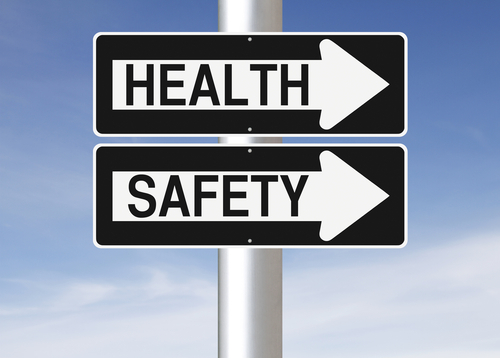Take a quick look at the requirements for HAZWOPER health and safety plans.
 |
OSHA’s HAZWOPER standard (29 CFR 1910.120) requires employers to develop and implement a written safety and health plan (HASP) for their employees involved in hazardous waste operations. The plan should be designed to identify, evaluate, and control safety and health hazards, and provide for emergency response for hazardous waste operations.
Here’s a short checklist of key HASP requirements:
According to 1910.120(b)(1), the HASP must be written and incorporate the following elements:
- Organizational structure
- Comprehensive work plan
- Site-specific safety and health plan
- Safety and health training program
- Medical surveillance program
- Standard operating procedures for safety and health
- Any necessary interface between general program and site specific activities
The HASP must be made available to:
- Employees and their designated representatives
- Contractors or subcontractors involved with the hazardous waste operation
- OSHA personnel, and to personnel of other federal, state, or local agencies with regulatory authority over the site
Meet your OSHA-required 8-, 24-, or 40-hour HAZWOPER training requirements with a DVD that contains 17 customizable PowerPoint presentations and a manual training kit. Get the details.
Organizational Structure
According to 1910.120(b)(2), the organizational structure part of the program must establish the specific chain of command and specify the overall responsibilities of supervisors and employees.
It must include, at a minimum, the following elements:
- A general supervisor who has the responsibility and authority to direct all hazardous waste operations
- A site safety and health supervisor who has the responsibility and authority to develop and implement the site safety and health plan and verify compliance
- All other personnel needed for hazardous waste site operations and emergency response and their general functions and responsibilities
- The lines of authority, responsibility, and communication
The organizational structure must be reviewed and updated as necessary to reflect the current status of waste site operations.
Work Plan
A comprehensive work plan must address the tasks and objectives of the site operations and the logistics and resources required to reach those tasks and objectives.
The work plan must:
- Address anticipated cleanup activities as well as normal operating procedures
- Define work tasks and objectives and identify the methods for accomplishing those tasks and objectives
- Establish personnel requirements for implementing the plan
- Provide for the implementation of employee training
- Provide for the implementation of the required informational programs
- Provide for the implementation of the medical surveillance program
You won’t find a more thorough and effective course related to hazardous waste operations to help meet the employee training requirements of OSHA’s HAZWOPER regulation than BLR’s HAZWOPER Training Program. Find out more.
Site-Specific Safety and Health Plan
The site safety and health plan, which must be kept on site, should address the safety and health hazards of each phase of site operation and include the requirements and procedures for employee protection.
At a minimum, the site-specific plan should address the following:
- A safety and health risk or hazard analysis for each site task and operation found in the work plan
- Employee training assignments
- PPE to be used by employees for each of the site tasks and operations being conducted
- Medical surveillance requirements
- Frequency and types of air monitoring, personnel monitoring, and environmental sampling techniques and instrumentation to be used, including methods of maintenance and calibration of monitoring and sampling equipment to be used
- Site control measures in accordance with the site control program
- Decontamination procedures
- An emergency response plan for safe and effective responses to emergencies, including the necessary PPE and other equipment
- Confined space entry procedures
- A spill containment program
- Pre-entry briefings to be held prior to initiating any site activity and at other times as necessary to ensure that employees are apprised of the site safety and health plan and that this plan is being followed
The standard also requires inspections conducted by the site safety and health supervisor or another knowledgeable individual as necessary to determine the effectiveness of the site safety and health plan. Any deficiencies in the site safety and health plan must be corrected promptly.
